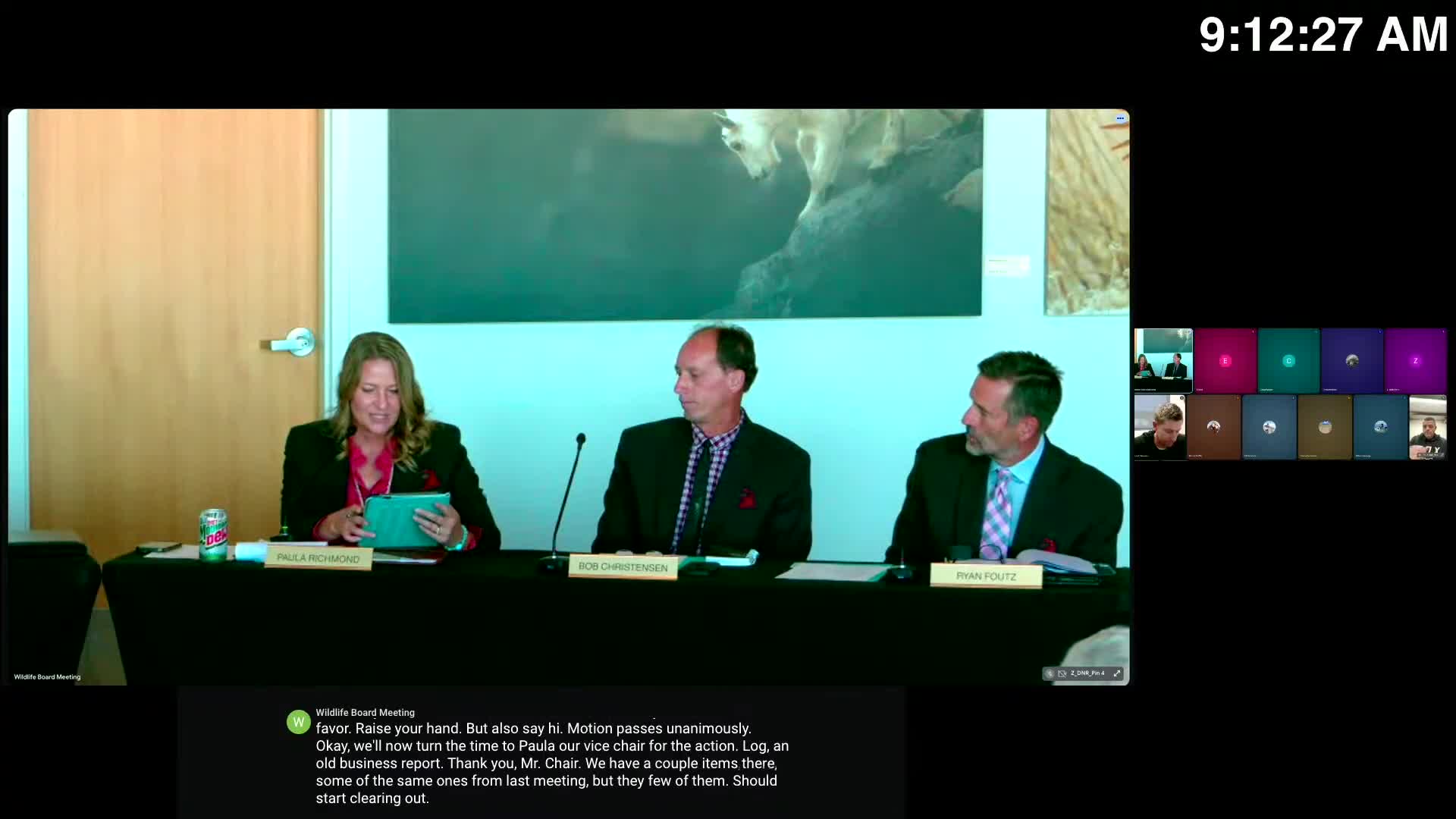Utah Wildlife Division Announces Top 10 Fishing Destinations and New Spearfishing Data App
September 19, 2025 | Wildlife Resources, Utah Environment, State Agencies, Organizations, Utah Executive Branch, Utah
This article was created by AI summarizing key points discussed. AI makes mistakes, so for full details and context, please refer to the video of the full meeting. Please report any errors so we can fix them. Report an error »

In a recent meeting held by the Utah Division of Wildlife Resources, key discussions centered around enhancing fishing opportunities and managing wildlife effectively in the state. As the sun rose over the Wasatch Mountains, board members gathered to address pressing issues that could shape the future of Utah's natural resources.
One of the primary topics was the introduction of a list of destination water bodies, aimed at boosting fishing activities across the state. Trina Hedrick, the cold water sport fishing coordinator, presented a carefully curated list of the top ten economically significant waters, derived from the Blue Ribbon Economic Survey. These waters, which include Strawberry Reservoir, Deer Creek Reservoir, and Flaming Gorge, are recognized for their exceptional fishing quality and access, providing vital economic benefits to rural communities.
The board also discussed the potential for increased spearfishing opportunities, examining how this could impact local fisheries. Additionally, the use of aerial equipment for hunting and game retrieval was brought to the table, with Dax Mingus leading the exploration of this innovative approach.
Another significant point of discussion was the management of sheep hunts in light of a recent disease outbreak. The board considered removing certain hunts to allow for better opportunities for hunters while ensuring they are promptly informed about available hunts and health concerns affecting sheep populations.
Lindy Barney was tasked with investigating the implications of private land vouchers, particularly regarding point loss and waiting periods for hunters. This initiative aims to streamline the hunting process and enhance the overall experience for those seeking to engage with Utah's wildlife.
As the meeting concluded, the board members expressed their commitment to preserving and enhancing Utah's natural resources while balancing the needs of hunters and anglers. With these discussions, the Utah Division of Wildlife Resources is poised to implement changes that could significantly impact the state's outdoor recreation landscape in the coming years.
One of the primary topics was the introduction of a list of destination water bodies, aimed at boosting fishing activities across the state. Trina Hedrick, the cold water sport fishing coordinator, presented a carefully curated list of the top ten economically significant waters, derived from the Blue Ribbon Economic Survey. These waters, which include Strawberry Reservoir, Deer Creek Reservoir, and Flaming Gorge, are recognized for their exceptional fishing quality and access, providing vital economic benefits to rural communities.
The board also discussed the potential for increased spearfishing opportunities, examining how this could impact local fisheries. Additionally, the use of aerial equipment for hunting and game retrieval was brought to the table, with Dax Mingus leading the exploration of this innovative approach.
Another significant point of discussion was the management of sheep hunts in light of a recent disease outbreak. The board considered removing certain hunts to allow for better opportunities for hunters while ensuring they are promptly informed about available hunts and health concerns affecting sheep populations.
Lindy Barney was tasked with investigating the implications of private land vouchers, particularly regarding point loss and waiting periods for hunters. This initiative aims to streamline the hunting process and enhance the overall experience for those seeking to engage with Utah's wildlife.
As the meeting concluded, the board members expressed their commitment to preserving and enhancing Utah's natural resources while balancing the needs of hunters and anglers. With these discussions, the Utah Division of Wildlife Resources is poised to implement changes that could significantly impact the state's outdoor recreation landscape in the coming years.
View full meeting
This article is based on a recent meeting—watch the full video and explore the complete transcript for deeper insights into the discussion.
View full meeting

